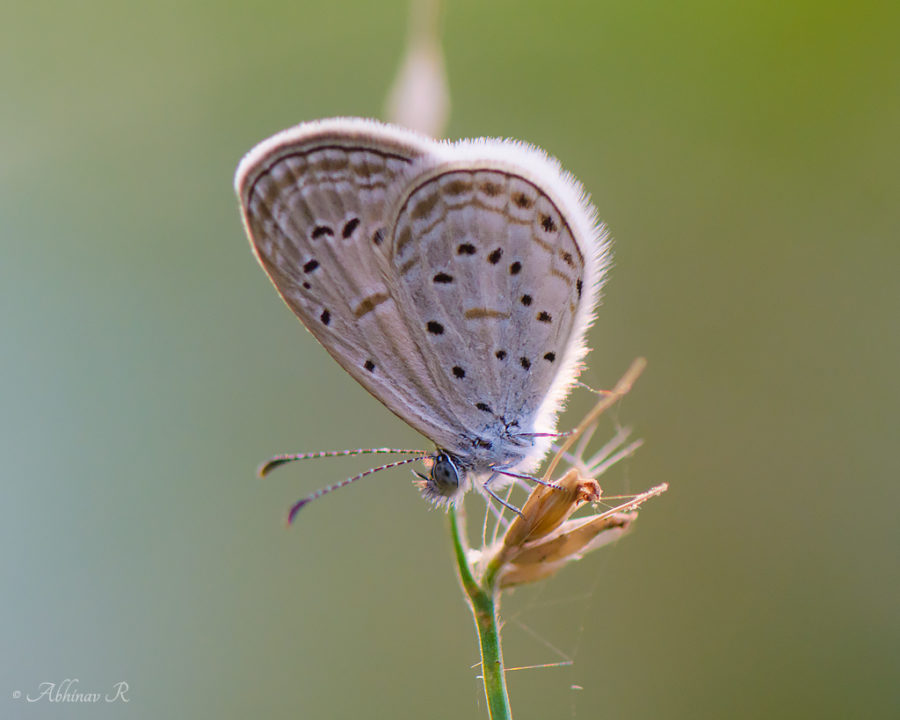Tiny Grass Blue, scientific name Zizula hylax, is known to be the second smallest butterfly seen in India. Here I am sharing with you the photos of this butterfly I’ve taken.

Exif: f/5.6, ISO 800, 1/160sec, -0.3 step, 105mm, Nikon D7100, Micro-Nikkor 105mm f2.8G VR, Date: January 13, 2016, Location: Cheruvally, Kottayam, Kerala
The above photo was taken minutes before the Sunset. The butterfly was resting on the tip of a very low grass leaf. As the sun was near to the western horizon and the subject was backlit, I could get a nice rim around the edges. Morning and evening, especially just after sunrise or just before sunset, is a beautiful time to photograph butterflies. Because the lighting will be nice and graceful during the time.
And I was almost lying on the ground to get an eye level view through my viewfinder; and to keep the lens perpendicular to the surface of the wings (to keep everything in focus). Even then, the apex region is not in perfect focus, I admit. For that I should have reduced the aperture a little, or moved back a little and compose (then crop later). Again that would result in more depth of field and background would become distracting. So personally I prefer beautiful backgrounds than everything in perfect focus. Another option is focus stacking (which I had done with the Pygmy Scrub Hopper). I had taken two differently focused photos for this also; have to process it.
More about Tiny Grass Blue (Zizula hylax)
There is only one species of butterfly known to be the smaller than this, and that is Grass Jewel or Freyeria trochylus. There is just about 1 mm difference between the wingspans of both; Zizula hylax is about 16 mm and Freyeria trochylus is about 15 mm.
See Also: Lesser Grass Blue
It is commonly found in South Asian countries including India. Easier to identify and distinguish from other grass blues by the tiny size and unique arrangement of spots.
The spot near to the apex on the under fore wing is strongly curved, even ‘v’ shaped on some. There are two costal spots on the under fore wing. The spots on the under hind wing are also almost on a curve, not much deviated like the Zizina otis.
Fabaceae or Acanthus plants are the main host plants. Seen in abundance (at least here) during the months between November and February. Usually found very closer to the ground; even in groups, flying around Fabaceae plants.
Family: Lycaenidae

